

What is the composition of the cable structure?
Cable manufacturing is a material finishing and assembly industry. First of all, the amount of material is very large, and the material cost of cable products accounts for 80-90% of the production cost; secondly, there are many types of materials used, with special requirements for electrical conductivity, such as conductive copper, copper purity requirements are in More than 99.95%, some products use oxygen-free high-purity copper; third, the selection of materials will play a decisive role in the manufacturing process, process, product performance and service life.
At the same time, wire and cable manufacturing enterprises have a close relationship with whether they can scientifically save materials in material selection, processing and production management.
Therefore, the cable product design must be carried out simultaneously with the material selection. Usually, some materials must be selected, which can only be determined after the process and performance screening test.
Product name and material structure
(1) Wire: The most basic and necessary main component for the product to play the function of current or electromagnetic wave information transmission.
Raw materials: Non-ferrous metals with good electrical conductivity, made of non-ferrous metals with good electrical conductivity such as copper, aluminum, copper-clad steel, copper-clad aluminum, etc., made of non-ferrous metals with good electrical conductivity.
Bare copper wire, tinned wire; single branch wire, stranded wire; stranded wire.
(2) Insulation layer: It is a component wrapped around the wire and acts as an electrical insulation. That is to say, it can ensure that the transmitted current or electromagnetic wave, the light wave only advances along the wire and does not flow to the outside, and the potential existing on the conductor (that is, the potential difference with surrounding objects, that is, the voltage) is isolated. The normal transmission function ensures the safety of external objects and individuals. Conductor and insulating layer are the two basic components that must be possessed by cable products (except bare wires).
Material: PVC, PE, XLPE, PP, fluoroplastic, rubber, paper, mica tape.
(3) Filling structure: Many wire and cable products are multi-core, one of which is made into cables (or grouped into cables for multiple times), and the other is that the shape is not round. There is a large gap, so the filling structure must be added when forming the cable, so that the outer diameter of the cable is relatively round, which is convenient for wrapping and extruding the sheath.
Material: PP rope.
(4) Shielding: It is a component that isolates the electromagnetic field in the cable product from the external electromagnetic field; the cable product used also needs to be isolated from each other between different cable pairs (or wire groups) inside it. The shielding layer can be said to be an "electromagnetic isolation screen". In order to achieve uniform distribution of conductor shielding and insulating shielding of high-voltage cables.
Material: bare copper wire, copper clad steel wire, tinned copper wire.
(5) Sheath: When wire and cable products are installed and operated in a variety of different environments, the product must be protected as a whole, especially the parts that protect the insulating layer, which is called the sheath.
Material: PVC, PE, rubber, aluminum, steel tape.
(6) Tensile parts: typical structures include steel-cored aluminum stranded wires, optical fibers and optical cables. In short, tensile elements play a major role in the development of special thin, soft, and soft products that require multiple bends at the same time.

 The browser own share function is also very useful~
The browser own share function is also very useful~



